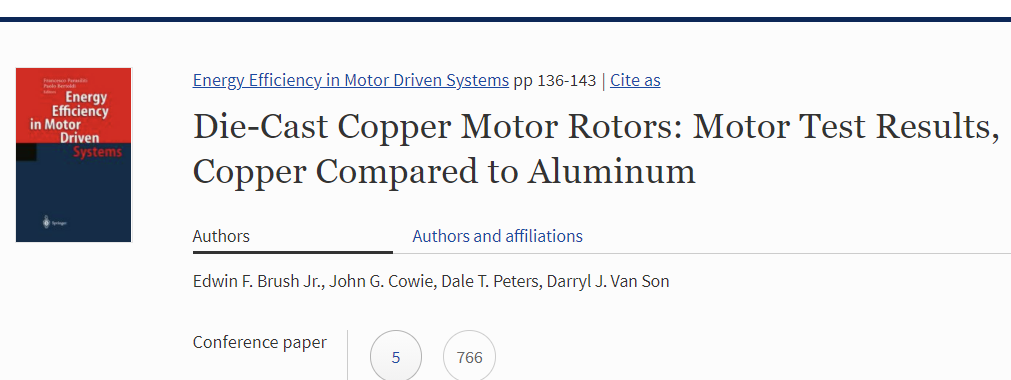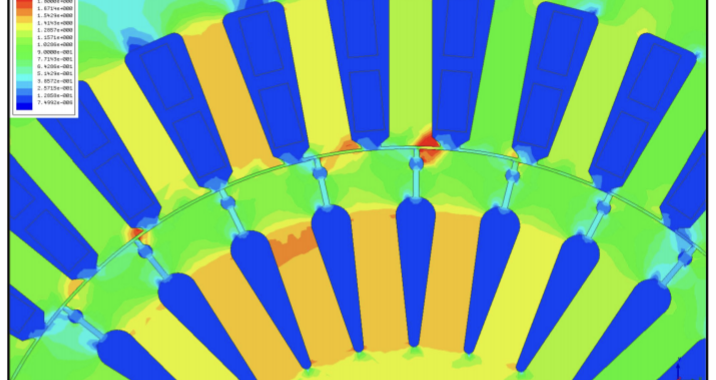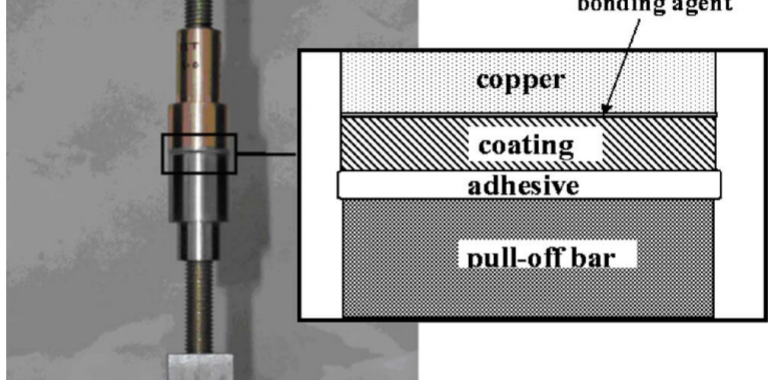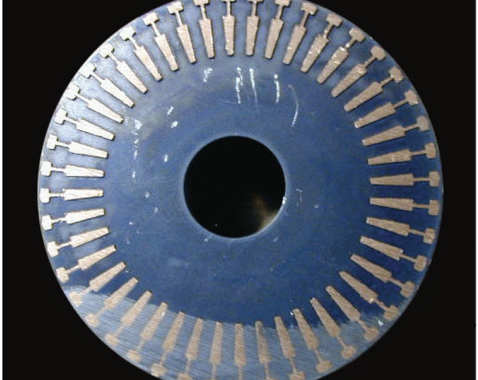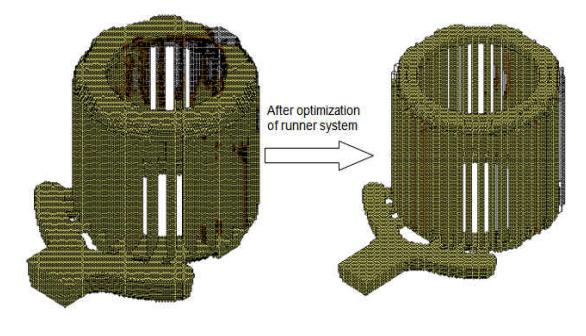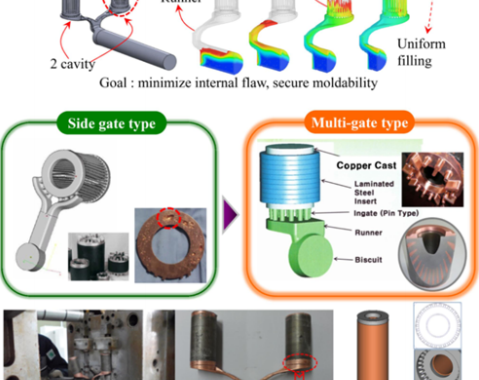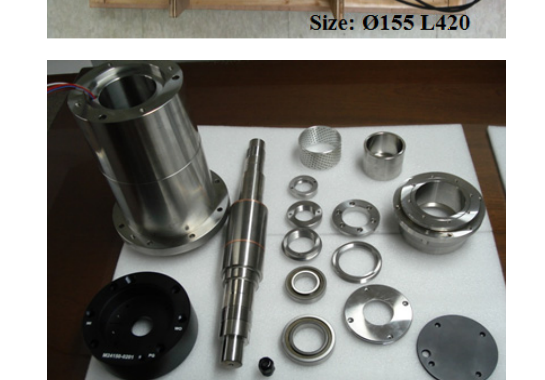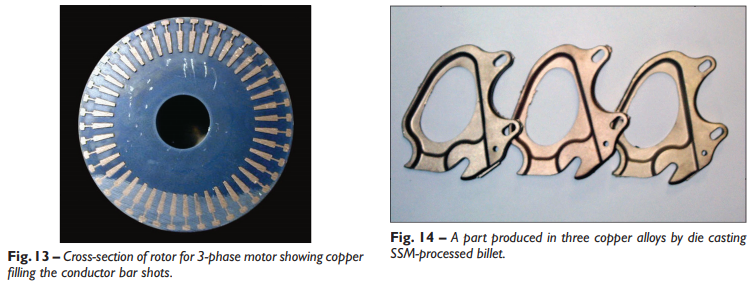John G. CowieCopper Development Associations Inc.New York, NY Dale T. PetersConsultant to CDA Inc.Hilton Head Island, SC Edwin F. Brush, Jr.Consultant to CDA Inc.Weston, MA Stephen P. MidsonFormcast, Inc.Denver, CO Articles on materials appearing in materials issues have generally focused on the common aluminum-, zinc- and magnesium-based die casting alloys. This report differs in that
Read More
Amit Sakhuja and Jerald R. Brevick Citation: AIP Conference Proceedings 712, 1881 (2004); doi: 10.1063/1.1766807View online: http://dx.doi.org/10.1063/1.1766807View Table of Contents: http://scitation.aip.org/content/aip/proceeding/aipcp/712?ver=pdfcovPublished by the AIP Publishing Abstract Recent research by the Copper Development Association (CDA) has demonstrated the feasibility of die�casting electric motor rotors using copper [1]. Electric motors using copper rotors are significantly more energyRecent
Read More
다이캐스트 구리 모터 로터: 구리와 알루미늄 모터 테스트 비교 결과 Edwin F. BrushJr.John G. CowieDale T. PetersDarryl J. Van Son Abstract Motor manufacturers have long realized that because the electrical conductivity of copper is nearly 60% higher than that of aluminum, substituting copper for aluminum in the squirrel cage of the induction motor would markedly increase the electrical energy efficiency of the machine. Most
Read More
구리 다이캐스팅으로 IE4 효율 수준을 달성하기 위한 15kW, 2극 유도 전동기의 설계 최적화 Abstract This paper describes the design and simulation of 15 kW, 2 pole, 50 Hz, three phase induction motor to achieve IE4 efficiency level as defined by the International Electrotechnical Commission (IEC). For achieving higher efficiency, the motor is designed, optimized and
Read More
압력 다이 캐스팅에서 구리 합금 다이의 열 거동에 대한 실험적 조사 L. D. Clark, M. T. Alonso Rasgado, K. Davey, S. Hinduja Author and Article InformationJ. Manuf. Sci. Eng. Nov 2006, 128(4): 844-859 (16 pages)https://doi.org/10.1115/1.2280586Published Online: February 3, 2006 Abstract The rate of heat extraction during the pressure die casting process is central to both the quality and the
Read More
D. T. PetersCopper Development Association Inc. Hilton Head Island, SCJ. G. CowieCopper Development Association Inc. New York, NY E. F. Brush, Jr.Copper Development Association Inc. Weston, MA S. P. MidsonCopper Development Association Inc. Denver, CO Presented by: North American Die Casitng Association Abstract Little use has been made of pressure die casting for the manufacture
Read More
Daniel Liang, Xu Yang, Jiabin Yu, Victor Zhou Abstract This paper introduces the recent technological progress in China on the manufacture of die cast Copper Motor Rotors (CMR) for induction motors. This manufacturing process provides a simple and practical means for large-scale economical production of high-efficiency induction motors. Rotor die casting obstacles/solutions are presented along
Read More
Do-Kwan Hong, Jae-Hak Choi, Pil-Wan Han, Yon-Do Chun, Byung-Chul Woo & Dae-Hyun Koo International Journal of Precision Engineering and Manufacturing volume 13, pages2251–2257 (2012)Cite this article Abstract This paper deals with the analysis techniques of a high speed and high efficiency 10 kW, 30,000 rpm rated induction motor. The induction motor has been analyzed by time-varying magnetic finite element
Read More
동 다이캐스팅 고속 유도전동기의 불평형 응답 해석 Abstract This paper deals with a copper die casting induction motor which has several advantages of motor performance. The developed motor is used as spindle motor in machining center. The dynamic characteristic analysis of rotor is dealt with for precision machining. The critical speed of rotor considering rotation
Read More
D. T. PetersCopper Development Association Inc.Hilton Head Island, SCJ. G. CowieCopper Development Association Inc.New York, NYE. F. Brush, Jr.Copper Development Association Inc.Weston, MAS. P. MidsonCopper Development Association Inc.Denver, CO Presented by: North American Die Casitng Association Abstract Little use has been made of pressure die casting for the manufacture of copper or copper alloy parts
Read More
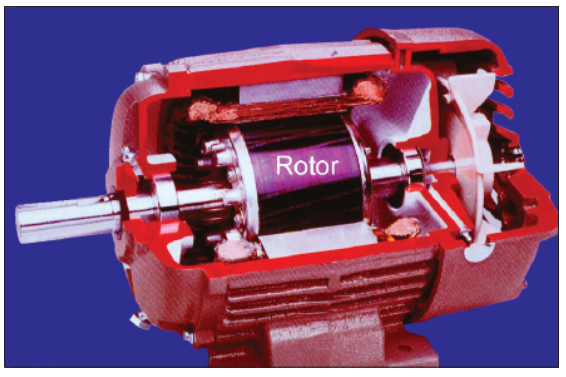
![FIGURE 1. 2D cross-section of the copper rotor die: 1. Steel laminations, 2. End ring (Cu), 3. Gate area (Cu), 4. Runner (Cu), and 5. Steel arbor [1].](https://castman.co.kr/wp-content/uploads/FIGURE-1.-2D-cross-section-of-the-copper-rotor-die-701x380.png)
